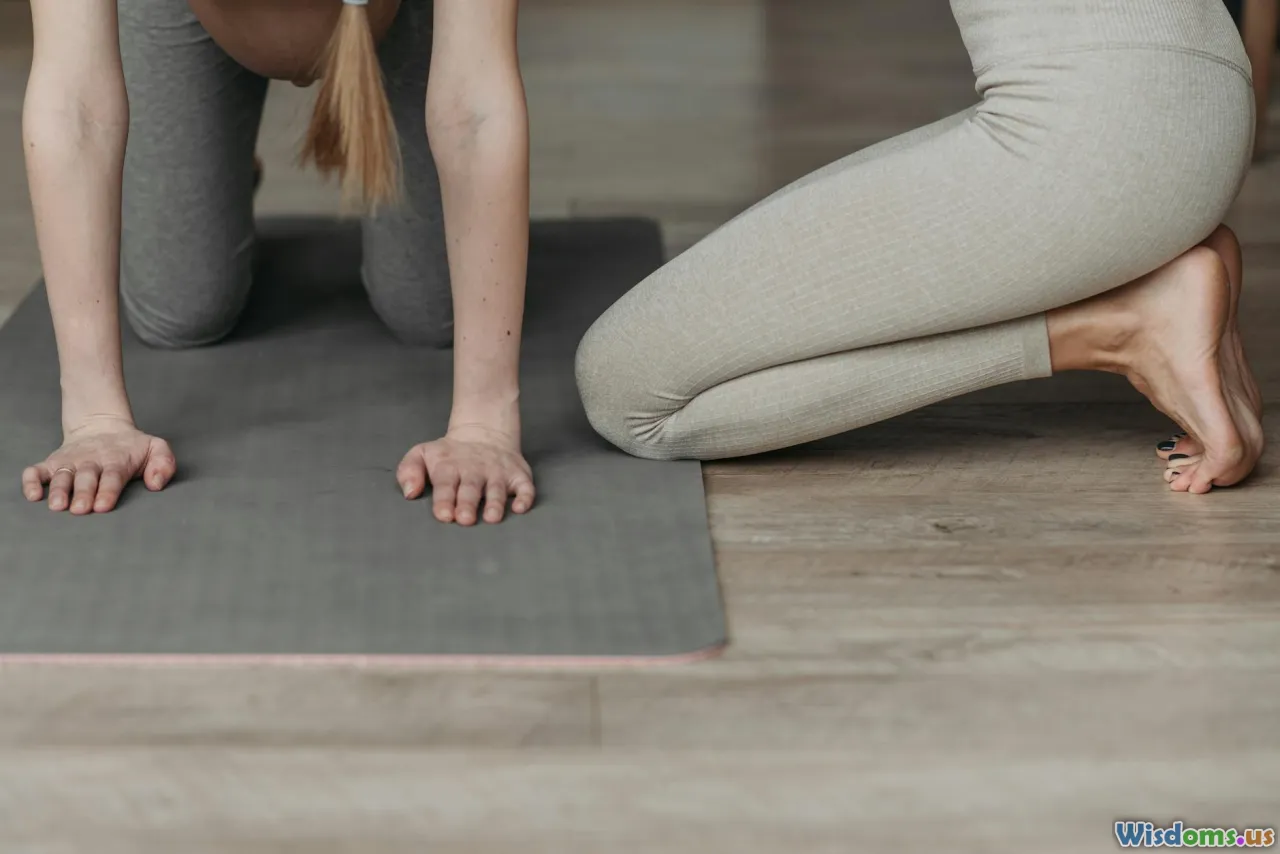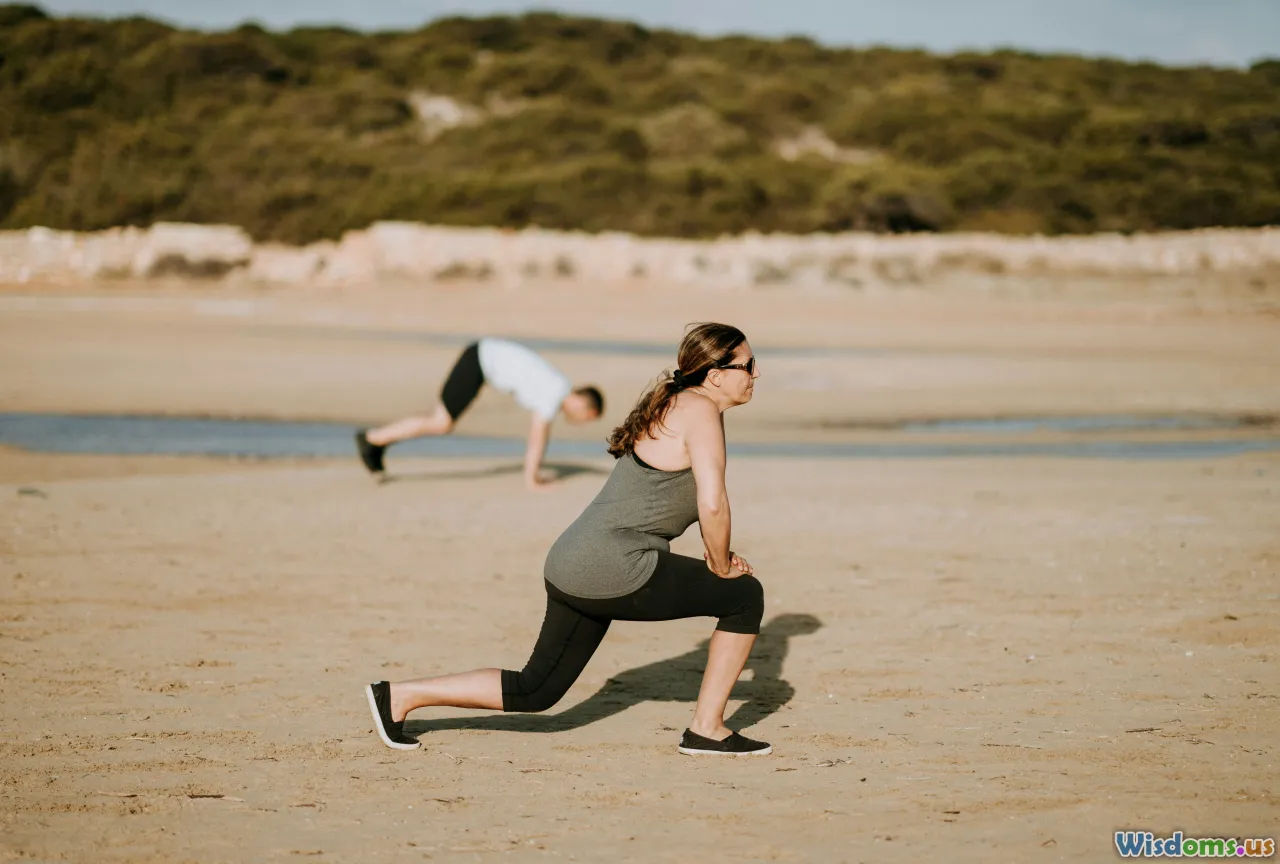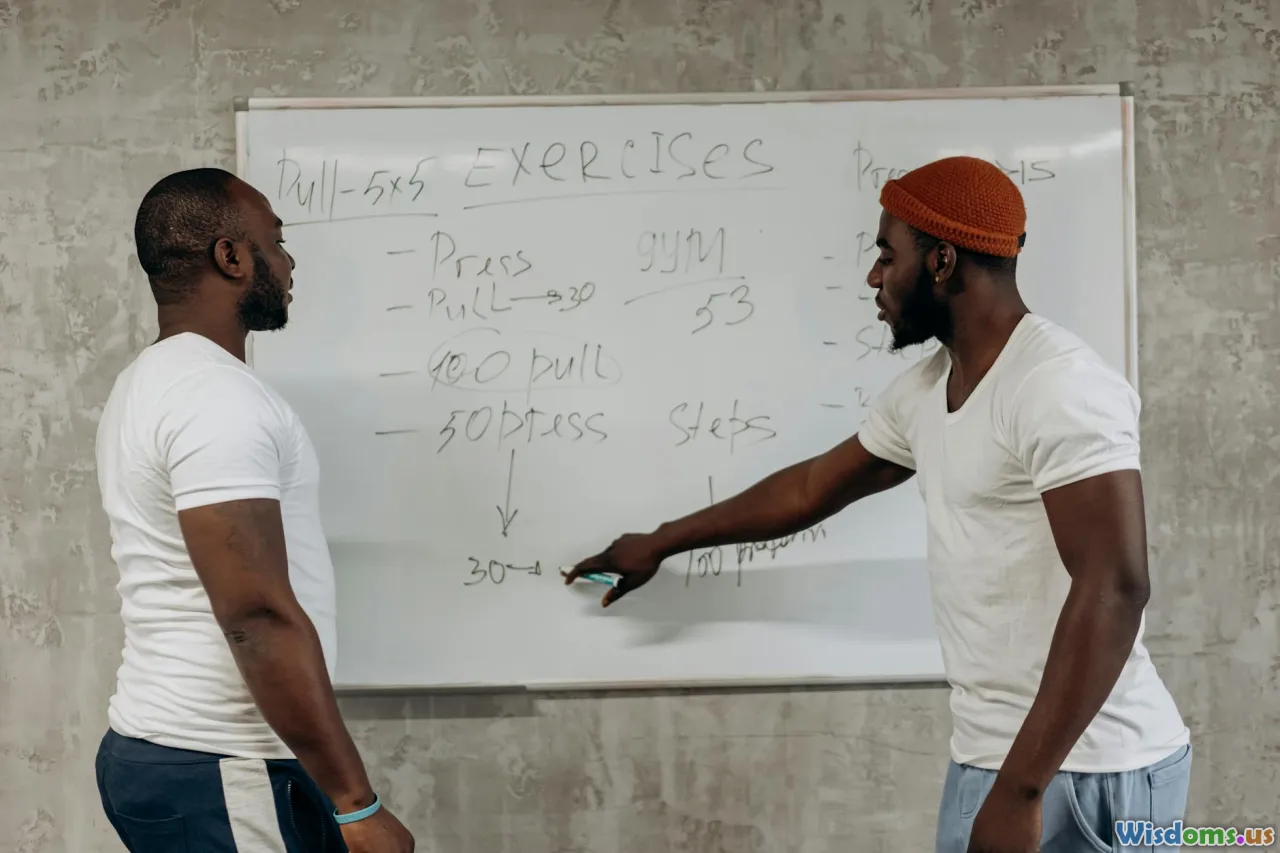
BeginnerFriendly Strength Training Moves for Pregnancy Wellness
17 min read Discover beginner-friendly strength training moves to promote wellness and comfort during pregnancy. (0 Reviews)
Beginner-Friendly Strength Training Moves for Pregnancy Wellness
Pregnancy is a time of immense change, strength—and, for many, uncertainty about what's safe for the body. Far from being off-limits, appropriately chosen strength training can be a deeply supportive tool during pregnancy. For beginners, stepping into this world can feel daunting, but with careful guidance and evidence-based moves, strength training can foster comfort, resilience, and overall wellness.
Let's explore beginner-friendly strength exercises tailored to pregnancy, why they're valuable, and practical ways to integrate them into your prenatal routine for a thriving, healthy journey.
Why Strength Training During Pregnancy Matters

Many expecting mothers wonder, "Is it safe to start strength training?" According to the American College of Obstetricians and Gynecologists (ACOG), moderate physical activity is not just safe but beneficial for most healthy pregnancies. Here’s why strength training gets special mention:
- Improved Core Stability: Strengthening the core supports the spine under an expanding belly, reducing pregnancy-related backaches.
- Easier Labor and Delivery: Building muscle tone may assist with stamina during childbirth and support faster postpartum recovery.
- Reduced Risk of Gestational Diabetes: Regular strength exercises can help manage blood sugar levels.
- Enhanced Mood & Energy: Exercise triggers endorphins, helping counter mood swings and fatigue common during pregnancy.
Fact: Studies have found that physically active women experience fewer complications during pregnancy and shorter deliveries.
The Basics: Setting Up for Safe and Productive Moves

Before you lift your first dumbbell, consider these foundational steps to ensure safety and comfort:
-
Consult With Your Doctor: Every pregnancy is unique. Get medical clearance, particularly if you’re expecting multiples, have placenta previa after 26 weeks, unmanaged high blood pressure, or other complications.
-
Choose Supportive Equipment: Opt for light dumbbells (2–8 lbs), resistance bands, or bodyweight-based workouts. A yoga mat and a sturdy chair for balance create a reliable setup.
-
Stay Hydrated: Drink water before, during, and after workouts.
-
Warm Up & Cool Down: Gentle five-minute walks and dynamic stretches prepare the body and ease it back to rest after training.
-
Monitor Breathing: Exhale with effort—never hold your breath (to avoid spikes in blood pressure).
Example Warmup: March in place, roll shoulders, gentle arm swings, and neck circles.
Move #1: Goblet Squats

Why It's Great: Goblet squats train lower body strength, support pelvic stability, and help prepare for labor. They mimic functional daily movements, like standing up from a chair, and foster balance as pregnancy progresses.
How-To:
- Stand with feet hip-width apart and hold one dumbbell (or kettlebell) close to the chest, supporting it at both ends.
- Inhale, brace the core, and lower your hips down and back as if sitting into a chair, keeping knees behind toes.
- Go as low as comfortable; thighs parallel to the ground is sufficient.
- Exhale and press through heels to return to standing.
- Perform 2–3 sets of 8–12 reps.
Tips: Keep feet stable, chest lifted, and avoid excessive arching of the low back. If balance feels shaky, practice against a wall or holding onto a chair.
Move #2: Seated Overhead Press

Upper body strength matters—carrying car seats, lifting groceries (or eventual babies!). The seated overhead press is beginner-friendly and posture-supportive.
How-To:
- Sit tall on a sturdy chair, feet flat on the floor, dumbbells in each hand at shoulder height.
- Exhale and press weights upward until arms are straight but not locked.
- Inhale, slowly lowering back to starting position.
- Complete 2–3 sets of 8–10 reps.
Tips: Steer clear of overly heavy weights; the last reps should feel challenging but doable. Avoid arching the back—draw the belly in gently to maintain support.
Insight: Seated presses minimize the risk of balance slips and take pressure off the lower back.
Move #3: Bird Dog

This bodyweight-only move targets the core (especially important for spinal alignment), hips, and back. It's gentle and excellent for beginners.
How-To:
- Start on hands and knees, aligning wrists under shoulders and knees under hips.
- Brace the core and slowly extend one arm straight forward while extending the opposite leg behind, keeping hips square.
- Hold for 2–3 seconds, focusing on balance and a flat back.
- Return to start and repeat on the opposite side.
- Aim for 2–3 sets of 8–10 reps per side.
Pro Tip: Imagine balancing a cup of tea on your back—minimize hip rocking so the core does more work.
Safety: Avoid extreme ranges of motion; extend only as far as feels comfortable without overarching.
Move #4: Supported Wall Push-Ups

Push-ups are a classic strength-builder for the chest, arms, and core, but standard floor versions may not be ideal as your belly grows. Enter the supported wall push-up.
How-To:
- Stand about arm’s-length away from a wall, place hands on the wall at chest height, slightly wider than shoulders.
- Inhale, bend elbows, and lean chest towards the wall, keeping body in a straight line from head to heels.
- Exhale, push away from the wall to return.
- Aim for 2–3 sets of 10–15 reps.
Variation: As you build strength, step feet further back for greater challenge.
Pregnancy-Specific Benefit: This move prevents strain on the abdominal wall and avoids the lying-down position advised against in the second and third trimesters.
Move #5: Glute Bridge (with Modifications)

The glute bridge is a supercharged pelvic, hip, and lower back mover. With pregnancy-specific tweaks, it's accessible to most beginners.
How-To:
- Lie on your back with knees bent, feet flat on the floor, knees hip-width apart. (If you’re later in pregnancy, place a pillow under shoulder blades for a gentle incline.)
- Inhale, brace core, and press through heels to lift hips toward the ceiling.
- Hold for 2–3 breaths, squeezing glutes and thighs.
- Exhale, lower hips to ground with control.
- Complete 2–3 sets of 8–12 reps.
Pro-Tip: If lying flat becomes uncomfortable, do a standing hip thrust with back against a wall instead.
Pelvic Floor Note: Focus on gentle core activation, avoiding a "bearing down" sensation. Pair with mindful Kegel exercises for holistic lower-body health.
Core Considerations: Safe Abdominal Strengthening

Building—and protecting—core strength in pregnancy can alleviate lower-back pain and support daily movement. However, some traditional ab exercises, like crunches or sit-ups, are best avoided. Instead, opt for these modifications:
- Standing Knee Raise: Stand tall, hold onto a chair, and lift one knee at a time towards the chest, actively engaging abs. Alternate sides.
- Side-Lying Leg Lifts: Lay on one side, lift top leg slowly, working the hips and obliques. Switch sides after a set.
- Pelvic Tilts: On hands and knees, gently arch and round the back (cat-cow stretch) for safe core mobilization.
Insight: Skip any moves that cause "doming" of the belly midline—an early sign of ab separation (diastasis recti). Listen to your body: discomfort or fatigue is a cue to pause.
Breathing Techniques: Your Secret Strength Tool

Breathing guides can turn good exercises into great ones. Adjust your breath to synchronize with each move’s effort: exhale on exertion, inhale to recover.
Example: In a squat, inhale as you lower, exhale as you push up.
Enhancing this connection deepens core engagement and helps prepare for labor. Add a minute or two of diaphragmatic breathing before or after your sessions:
- Sit or lie comfortably, one hand on the chest and the other on your belly.
- Breathe in through the nose, feeling the belly rise, then exhale slowly through pursed lips.
- Repeat 5–10 cycles for better oxygenation and calm.
Fact: Focused exhalation has been shown to boost parasympathetic (rest and digest) activity, improving stress management—a helpful bonus for expectant parents.
Listening to Your Body: Pregnancy Safety Essentials

No two pregnancies are alike. Always watch for key warning signs during strength training, including:
- Vaginal bleeding or fluid leakage
- Dizziness, headache, or feeling faint
- Chest pain or palpitations
- Calf swelling or pain (risk for clots)
- Unequal or decreased fetal movement (later in pregnancy)
- Any sharp, sudden pain
If any of these occur, stop and consult your healthcare provider.
Actionable Tips for Consistent Practice:
- Wear supportive, non-restrictive clothing and shoes.
- Schedule workouts after a snack (to avoid low blood sugar).
- Train at a conversational pace: you should be able to talk, not gasp for air.
- Mix up routines to keep enthusiasm high and boredom low.
Sample Pregnancy Strength Training Routine for Beginners

Here’s a weekly primer to help integrate these beginner moves while respecting your body’s daily cues.
2–3 TIMES PER WEEK, 30–40 MINUTES
Warm-Up (5-7 min): March in place, arm circles, side steps, gentle neck rolls
Main Strength Circuit (repeat 2–3x):
- Goblet Squats (8–12 reps)
- Bird Dogs (8–10 reps per side)
- Wall Push-Ups (10–15 reps)
- Seated Overhead Press (8–10 reps)
- Glute Bridges (8–12 reps)
Cool-Down (5 min): Gentle stretching (hips, chest, shoulders) and 5 minutes focused breathing
Tip: Rest 1–2 minutes between circuits, and every time you need. Don’t push through fatigue—pregnancy is about responsive, not restrictive, fitness.
Maximizing Comfort: Small Adjustments, Big Rewards

Adaptability is the secret to happy, sustainable workouts during pregnancy. Pregnancy-specific fitness gear—like belly bands, wrist supports, or grippy socks—can boost confidence and reduce strain.
Adjust as Needed:
- For pelvic pain, decrease the range of motion of lower body moves.
- For hand discomfort, switch dumbbells for resistance bands or use water bottles.
- If lying flat is uncomfortable (especially in the third trimester), opt for more standing or incline versions.
Insight: Listen to daily changes in your energy, flexibility, or swelling—you may need to modify routines week to week, and that’s normal.
The Wellness Payoff: Strength You Can Feel

Committing to strength training as a beginner during pregnancy pays dividends beyond muscle: it’s about confidence, peace of mind, and embracing change with vitality. And remember—wellness is deeply individual. Celebrate consistency over intensity, savor small wins, and enjoy the connection between growing strong and growing new life.
Final Thought: With each rep, you’re strengthening more than your body—you’re nurturing resilience, comfort, and a healthy foundation for both you and your baby.
If in doubt, reach out: Consider working with a certified prenatal trainer or physical therapist for tailored advice and ongoing support.
Rate the Post
User Reviews
Popular Posts


















